Happy New Year, Friends! As we begin baking and cooking in 2024, some of us are looking for swaps for traditional baking ingredients. I’m here to help! And we’re starting today with five facts (and three observations) about vegan butter. I want you to be able to successfully use vegan butter in your baking, and that starts with knowing the ingredient with which you’re working.
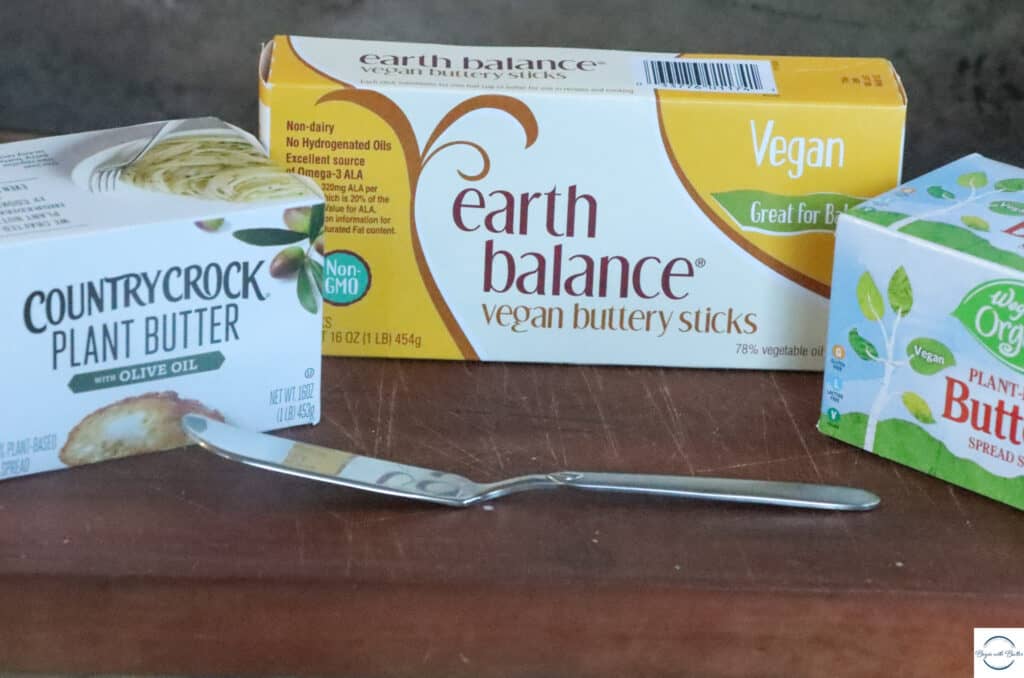
Baking Besties, swapping ingredients can be great, or it can be completely disastrous. And this is not the economy to be wasting money on disastrous baking experiments. So…I did the work for you so that you can go forward confidently with your recipe swaps. Because learning the science of your baking ingredients is the very best way to gain confidence as a baker.
Let’s go!
In this Article:
- 1. What is Vegan Butter? And is it the Same as Plant-Based Butter?
- 2. How is Vegan Butter Made?
- 3. Are There Cultured and Non-Cultured Versions of Vegan Butter?
- 4. What is the Fat Content of Vegan Butter?
- 5. How to Swap Vegan Butter for Dairy Butter
- 6. How Do They Perform in Baking?
- 7. How Do I Use Vegan Butter?
- 8. Vegan Butter is Still Butter
- Want to Learn More About Dairy Butter Too?
1. What is Vegan Butter? And is it the Same as Plant-Based Butter?
Vegan butter is butter! It’s simply butter that’s not made from dairy products (dairy milk and/or cream). YES, there are differences between the texture of vegan butter and dairy butter. That is to be expected, since the composition and processing of the two types of butter are quite different.
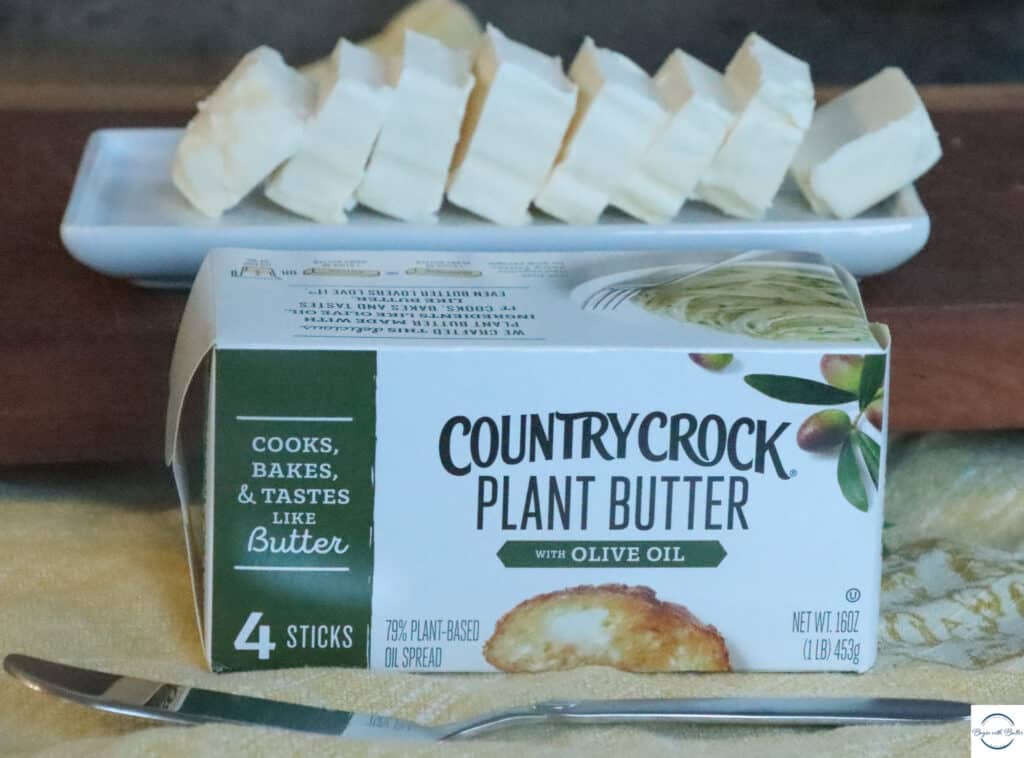
And yes, vegan and plant-based butter are the same thing. The terms are used interchangeably in the world. So, when I’m talking about vegan butter, just know that I’m talking about plant-based butter. And vice versa.
2. How is Vegan Butter Made?
Vegan butter is made by combining vegetable oil (olive, avocado, canola, etc.) with an emulsifying ingredient. Sometimes, nutritional yeast, herbs, or vegan preservatives are added to impact taste and texture of the finished product.
What is an emulsifying ingredient, you ask? Great question!
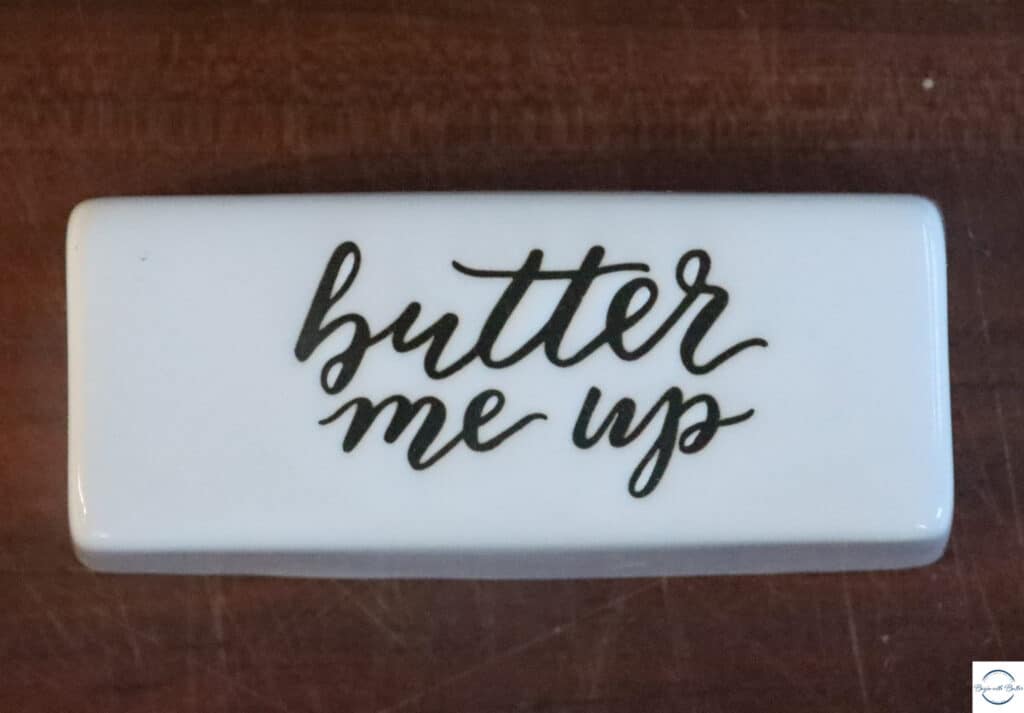
An emulsifying ingredient is a thickener that takes oil (a liquid ingredient) and changes it to a butter-like state. That means that it’s not quite liquid and not quite solid. This same reason is why dairy butter is solid when it’s cold, but it softens at room temperature, and it melts when heated. The point at which butter softens/melts is called its melting point, which is typically between 90°F-95°f, depending on the fat/water ratio in the butter.
These same qualities exist for vegan butter. Once added, the emulsifying ingredient thickens the oil, causing it to solidify in a similar manner to dairy butter. The mixture is then processed with additional ingredients (if necessary) and refrigerated. Vegan butter also has a melting point: it is typically between 75°F and 95°F, again depending on the fat/water ratio in the butter.
Some examples of emulsifying ingredients are: coconut oil, nuts, plant-based milks, and lecithin (from soybeans).
3. Are There Cultured and Non-Cultured Versions of Vegan Butter?
Yes! Cultured vegan butter is made by adding active cultures to the emulsion, before processing it into butter. It creates a tangy, buttermilk-y taste that is more similar to cultured dairy butter.
Non-cultured vegan butter is simply vegan butter that does not contain those active cultures.
4. What is the Fat Content of Vegan Butter?
This is where things get a little wonky. While dairy butter has to have at least 80% in order to be called butter, there are no such rules for vegan butter. As a result, the fat content for vegan butter can fall between 60% and 80%.
Why is this important? Because butter, most of the time, is the largest source for fat in your recipe. Fat = flavor, and we don’t want to skimp on that in our baked goods. Additionally, fat is a tenderizer, which means that it breaks down protein bonds from your flour to create a luxurious mouthfeel.
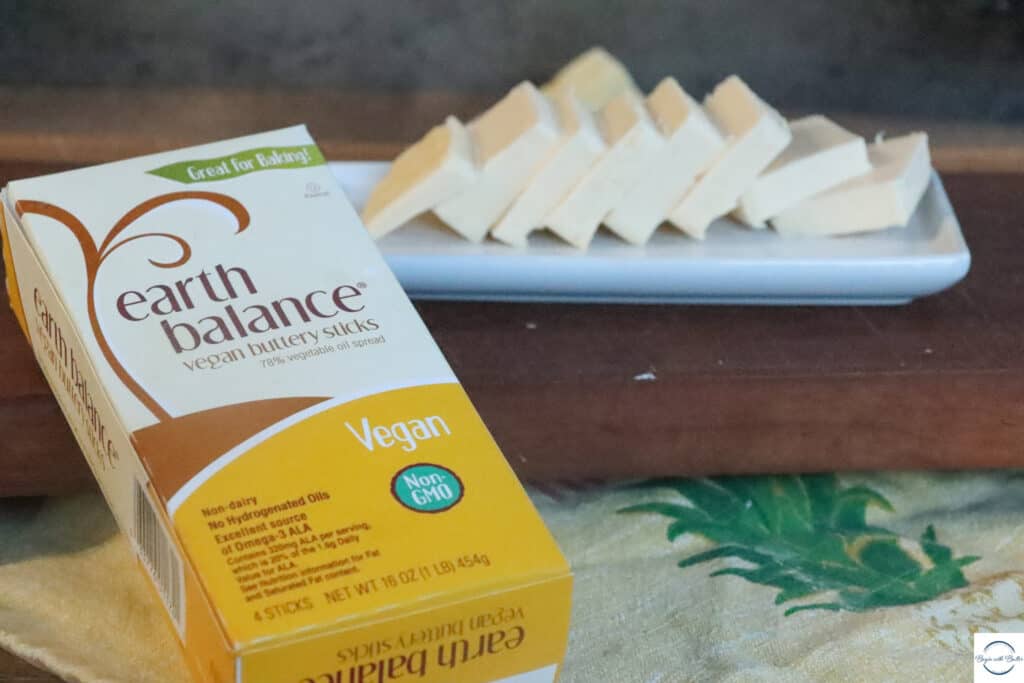
For this reason, when working with vegan butter, I always, always, always make sure that I’m working with a higher-fat vegan butter. There are three vegan butter brands that I’ve worked with on my vegan baking journey: Earth Balance, Country Crock, and Wegmans (store brand). There are a few more that I really want to try, so keep your eyes peeled on this blog post for updates!
Earth Balance clocks in at 78% fat. This means a very luxurious mouthfeel! Also, taste-wise, it’s quite similar to dairy butter.
Country Crock Vegan Butter checks in at a nice 79% fat. Again, this creates an amazing mouthfeel! Taste-wise, it is a little different than traditional dairy butter, but not in a bad way. And since we are not comparing apples to apples, we’re not looking for vegan butter that tastes exactly like dairy butter. 😊
Wegmans has the lowest fat content, checking in at 65%. The rest of the content is water. Just like with dairy butter, more water means that it takes longer to come to room temperature; the texture of a cake will be a bit tougher with this butter. The lower fat content also impacts flavor, though Wegmans did an admirable job of enhancing the flavor.
I use these as an example to show that vegan butter can run the gamut as far as fat content is concerned. For baking, you want the higher-fat stuff, since it’s doing a lot of heavy lifting on the flavor.
5. How to Swap Vegan Butter for Dairy Butter
It’s a 1:1 swap! If a recipe calls for 227 g (or 1 c) of dairy butter, you can use the same amount of vegan butter as an equal swap.
Remember, though, that for baking, you want a higher-fat vegan butter.
6. How Do They Perform in Baking?
Butter has a few important functions in baking: 1) it helps with rise (when creamed properly with sugar); 2) it impacts taste and texture; and 3) it impacts caramelization. In testing the above brands, I observed the following:
Earth Balance and Country Crock vegan butters creamed beautifully. They both got extremely light and fluffy, like a dairy butter, and they helped create a tremendous rise in my vegan pound cakes.
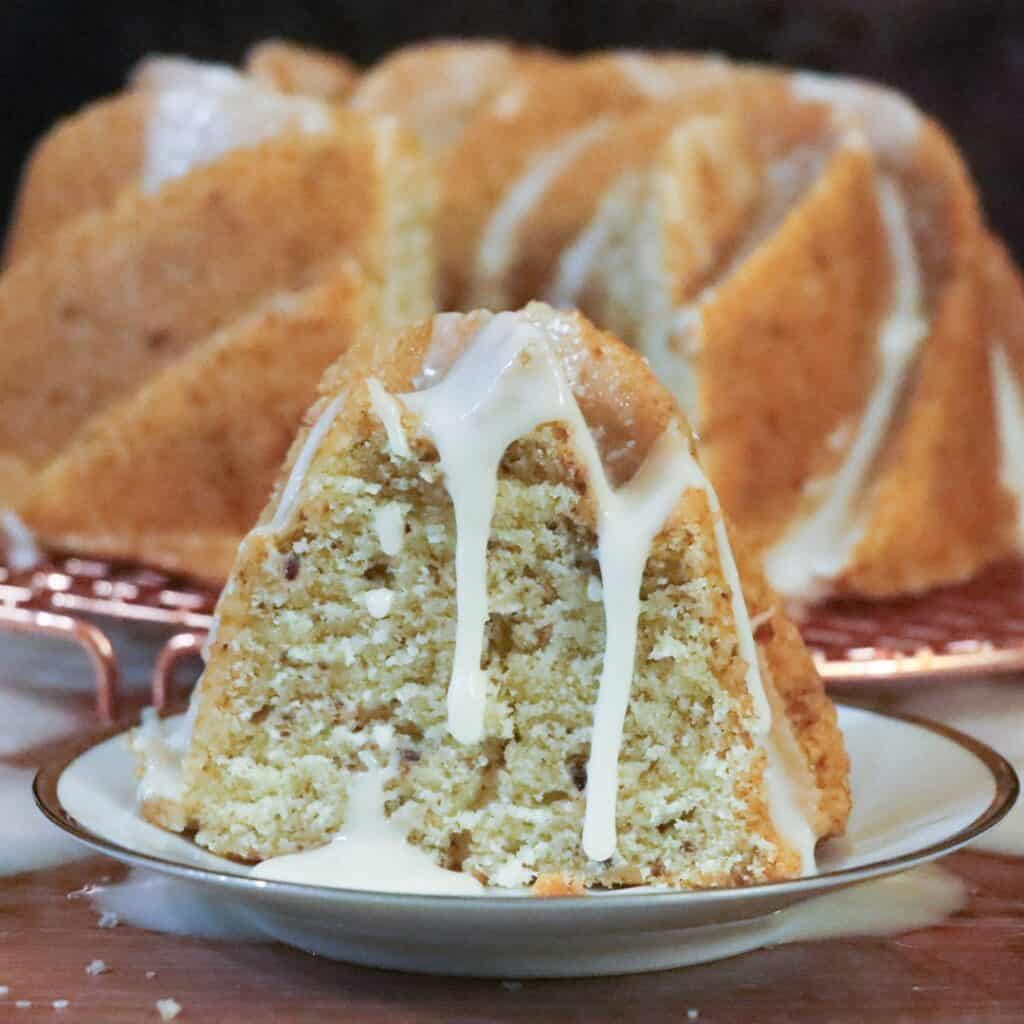
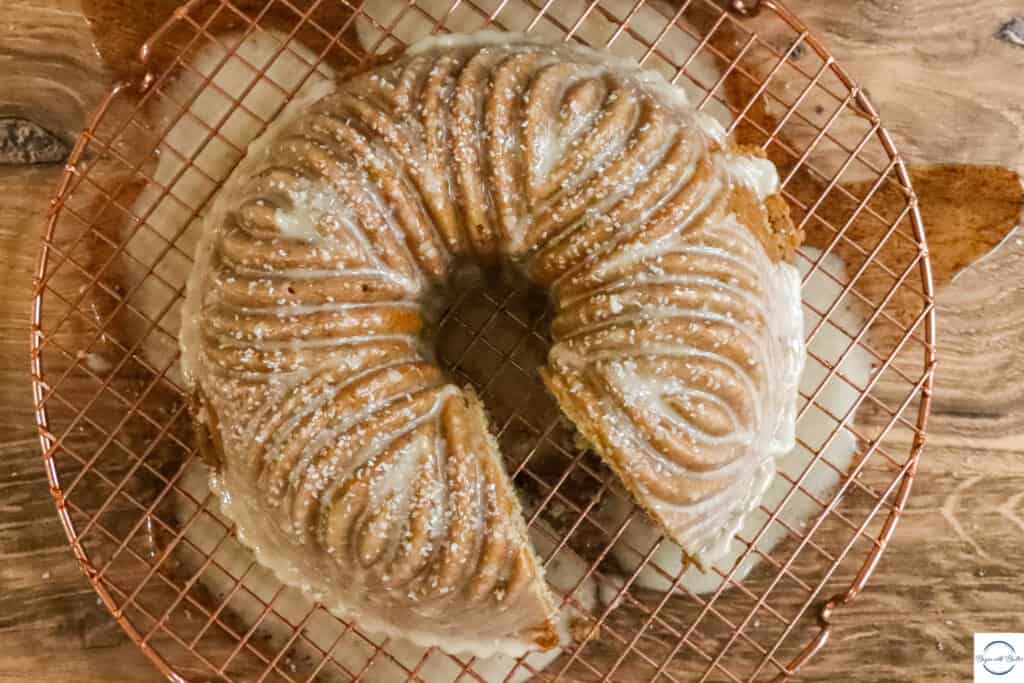
The taste and texture were similarly excellent with Earth Balance and Country Crock vegan butters. While these cakes do not have the extreme buttery flavor that you might expect from a pound cake (stay with me here, dear reader), the texture held its own against any and all dairy butter cakes.
I said it. Texturally, these are two great butters for vegan baking.
And the taste…well, if the speed with which they disappeared is any indication…the taste was quite good (I agree with this observation by the way). 😊
And finally, that pound cake crust. Because a pound cake just isn’t the same without it. While butter is not the only thing that is responsible for that gorgeous caramelization, it plays a big part. And Friends, FRIENDS, Earth Balance and Country Crock for the win. So far in my vegan baking journey, I’ve been extremely impressed with these two butters for baking. I will definitely continue to use them as I continue experimenting!
7. How Do I Use Vegan Butter?
You might have noticed that I consistently harp on emphasize the need to allow butter to come to room temperature before you use it. The same is true here!

The key to bringing any butter to room temperature is knowing the melting point. Typically, a higher-fat butter takes less time to come to room temperature for baking; for example, I allow my Vermont Creamery butter to sit out for at least an hour before using. That’s a safe amount of time to allow a high-fat vegan butter to sit out at room temperature as well.
Once it’s room temperature, you use it as you would any other butter. If you have a good quality vegan butter, you’ll find that you quickly get confident working with it, since it will perform similarly to the dairy butter that you’ve used in the past. 😊
8. Vegan Butter is Still Butter
This means that it is still a fat. We are not using butter because we are trying to save calories, or create diet baked goods. We are using vegan butter because we are trying to make baked goods that conform to a plant-based lifestyle.
As those of you who tried to go plant-based by eating french fries already know…there are many, many ways to eat unhealthy foods while eating plant-based. (No shame, I was one such person a long time ago. 😂)
It is my personal opinion that vegan butter:1) works much the same as traditional dairy butter, when it is worked properly; 2) gives excellent texture to baked goods, when you use a high-fat vegan butter; and 3) lends excellent color and flavor. These are the reasons why I am excited to work with vegan butter this year, as I expand the vegan offerings on the Begin with Butter site.
Want to Learn More About Dairy Butter Too?
Check out this post: The Basics of Butter!
I sincerely hope that this has been helpful for you! À bientôt!


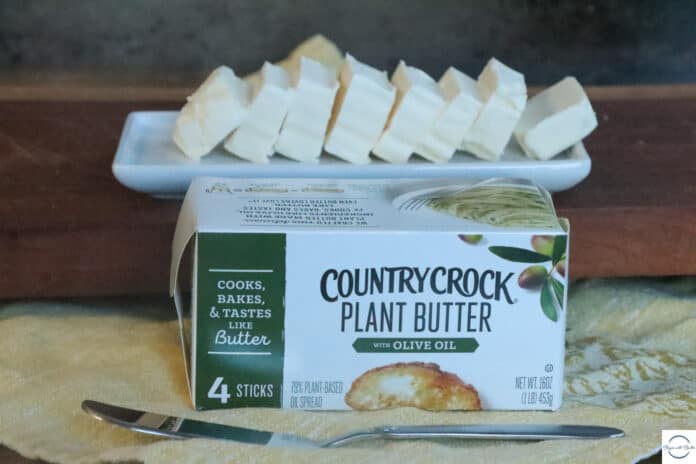
Hopefully you don’t get this question twice since my original comment disappeared before I could complete it. If using the plant-based butters made with olive oil, does that affect the taste of big goods? I have baked for years with true margarine, but it is impossible to find these days.
Hi there! It only posted once. 😂 Olive oil has a bit of a flavor to it, so it could impact the flavor of baked goods, depending on the brand of olive oil and the type of olive oil (typically, extra virgin olive oil has the biggest flavor). But, olive oil is always a solid choice for baking! I hope this helps!
Hello. What name brand non dairy milk do you use for cakes that pairs and taste great with vegan butter?
Hi Friend! My absolute favorite is Chobani oat milk. ❤️